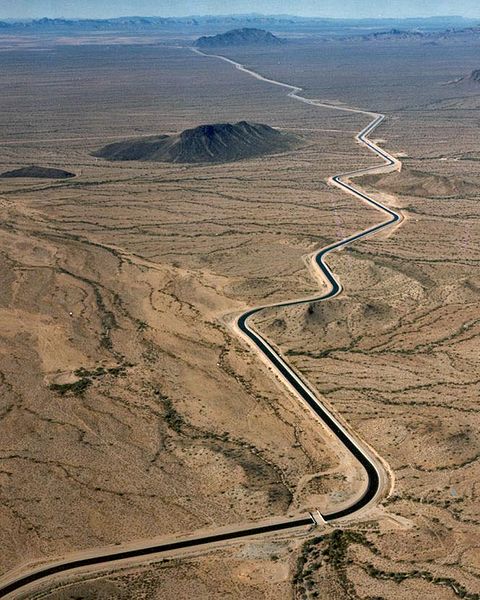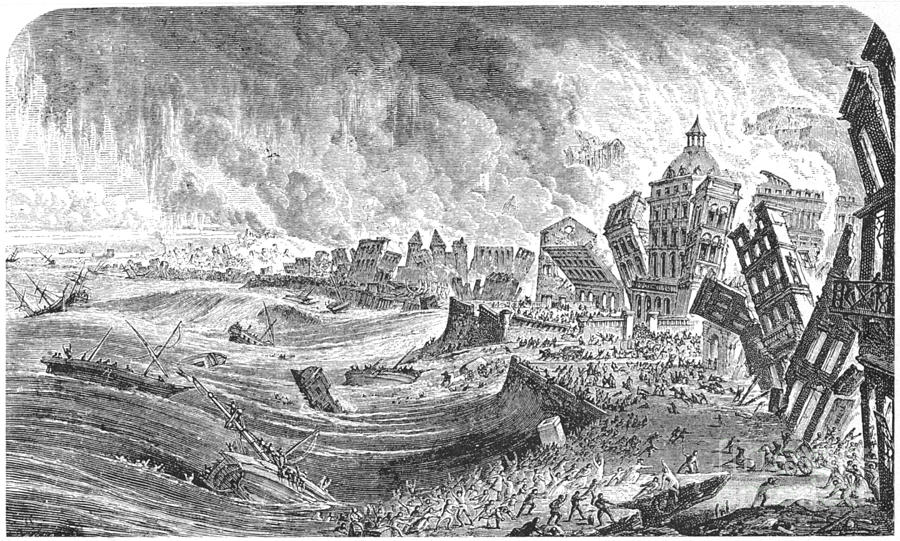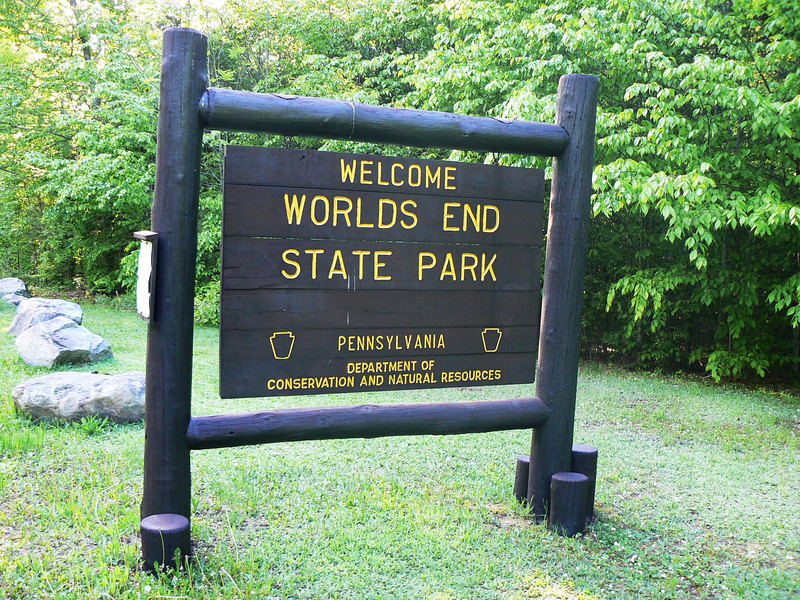This talk was originally delivered as part of the panel titled “Environmental Dreamscapes and the Heedless Sublime” at the 2013 Conference on Eco-poetics at U.C. Berkeley. Other participants were Nathan Brown, Evelyn Reilly, and Brian Teare.

I’ll begin with two of the most recognizable artworks of the twentieth century, Vladimir Tatlin’s Monument to the Third International, and Robert Smithson’s Spiral Jetty. These works share a helicoidal shape, and I suppose that makes them iconic, or at least memorable. But they also share a provocative relation to scale. Tatlin’s tower was never built, but it would have been one of the biggest buildings in the world. The Spiral Jetty is not that big, but it can be seen from a considerable altitude—even when submersed by the rising water that covers it much of the year. As dramatic as the Spiral Jetty is in its geophysical scale, Smithson’s orientation was more temporal. “I think the strongest art really projects you over millennia now,” he remarked in 1971; “it really encompasses a lot of time and not just somebody’s specious idea of history that you’re living up to.” He added that it’s not a question of talent, “talent is cheap”: “It’s a matter of setting up that contact with age upon age upon age.” In an Artforum article called “A Cinematic Atopia” the same year, Smithson amusingly but suggestively proposes a genuine “‘underground’ cinema” consisting of a film shot entirely in a cave and screened exclusively in the cave itself. He didn’t really need to cite the Paleolithic precedent behind such a notion, but certainly those caves like Lascaux and Pech-Merle completely embody the prospect of age touching age, projected across millennia. Smithson seems to have shared the outlook of Charles Olson: “I prefer my boundary of / land literally adjacent & adjoining mid Mesozoic at / the place of the parting of the seams of all the Earth.” Is it a coincidence that Gondwanaland is on the front cover of Charles Olson’s Maximus IV, V, VI in 1968 and is also featured in Smithson’s film about the Spiral Jetty? Smithson had curated the inaugural “Earthworks” show at Dwan Gallery in New York in 1968, an event with the kind of reverberation we might associate with Donald Allen’s New American Poetry anthology, flinging open the doors on a completely unheralded and unexpected territory.

The next year a documentary on Land Art was broadcast on German television, directed by Fernseh Gallery owner Gerry Schum, who observed in the voice-over: “A highway that we see from an airplane at 3,000 meters loses its purely functional character. It becomes primarily an artistic marking on the landscape.” Carl Andre, one of the Earthworks artists, concurred: “My idea of a piece of sculpture is a road.” This category shift instantly imposes on our entire techno-cultural infrastructure an artistic reckoning. And it’s true that subsequent Earthworks art tends to resemble public works projects, especially during construction. If you need a bulldozer to make art, the industrial associations swarm in.
A title like The Maximus Poems may suggest monumentality, but neither Olson’s Gloucester nor the Spiral Jetty share the grandiosity of the Egyptian pyramids or other colossal structures. “Look closely at a crack in the wall,” said Smithson, “and it might as well be the Grand Canyon.” Insofar as the Spiral Jetty is mainly known from photographs, for all practical purposes its size could be tabulated in inches. The Earthworks artists of 1968 captured public imagination by virtue of scale as much as anything. And for the past forty years James Turrell has been building a monumental installation on an extinct volcano crater in Arizona. His aspiration is to promote “a strong feeling of standing on the surface of the planet,” in particular to draw attention to “celestial events.” “I work outside because it’s the only place I can displace mass,” Michael Heizer said in 1970. “I like the scale,” he added, but “I’m not trying to compete in size with any natural phenomena, because it’s technically impossible.” Yet that supposed impossibility is actually a prerogative of the U.S. Corps of Engineers and similar agencies around the world, whose mission is defined not by art but by zoning commissions and land use regulations. Yosemite Valley, thanks in part to the photographic zeal of Ansel Adams, is Nature’s Pinup Queen, but she had a sister called Hetch-Hetchy that was dammed in 1923 for San Francisco’s water supply. A similar initiative was under consideration for decades by the U.S. Bureau of Reclamation to dam up the Grand Canyon for the aquatic convenience of Phoenix, Arizona, until it was finally squashed as late as 1968. But that gave rise to the Central Arizona Project diversion canal that siphons off Colorado River water 336 miles for Maricopa, Pinal, and Pima counties. When you look at an aerial view of the project, it trumps the Spiral Jetty by a long shot.

The question is, how is it that certain monumental become monumental, while others don’t? The category of the sublime fits them all in a way, so maybe there are two kinds of sublime: the artistic, and the heedless. Both kinds merge in certain characteristically American cases, which (cattle-)brand the world as theme park, assimilating Disneyland, Water World, Yosemite Valley and the Grand Canyon into an aesthetic menu—and I don’t just mean that the long lines of global tourism are a shared feature of these seemingly diverse environments. No, what’s common to them all is the emphatic physical declaration of the scene itself, which broadcasts, like a carnival barker: SHOWTIME! As with tourists at the Taj Mahal or the Eiffel Tower, the gaping shutterbug at scenic vistas of National Parks regards the place as an extension of a camera lens. They come to take pictures of what they’ve seen in other pictures. The heedless sublime reduces phenomena to a framework of the recognizable. Fittingly, the Library of Congress subject categories go directly from the Sublime to Subliminal Advertising.
When painters left their studios in the mid-nineteenth century to take up plein-air composition, they were confronted by that new artifact, the camera, already awaiting them. The singularity of a natural scene was already in cahoots with the ocular compulsion to frame the view and dispatch it in multiple copies. The postcard and the scenic overlook developed in tandem, to which Franz Kafka provides an uncanny update on whatever the term “primal scene” might suggest. The episode appears in The Trial, in which the accused K., sensing the exhaustion of his options along strict legal lines, finally resorts to visiting the artist Titorelli, arriving to find him sketching the goddess of Justice, who is blending into the goddess of the Hunt. After hearing his case, the painter asks, “‘Wouldn’t you like to see a painting I could sell you?’” Out of politeness, K. consents, and the scene unfolds with the rictus of inevitability that might have been learned from a Keystone comedy:
From beneath the bed the painter dragged a pile of unframed paintings so deeply covered in dust that when the painter tried to blow it away from the one on top, the dust whirled up before K.’s eyes, and for some time he could scarcely breathe. “A landscape of the heath,” said the painter, and handed K. the painting. It showed two frail trees, standing at a great distance from one another in the dark grass. In the background was a multicolored sunset. “Nice,” said K., “I’ll buy it.” K. had spoken curtly without thinking, so he was glad when, instead of taking it badly, the painter picked up another painting from the floor. “Here’s a companion piece to that picture,” said the painter. It may have been intended as a companion piece, but not the slightest difference could be seen between it and the first one: here were the trees, here was the grass, and there the sunset. But that made little difference to K. “They’re nice landscapes,” he said, “I’ll take both of them and hang them in my office.” “You seem to like the subject,” said the painter, and pulled out a third painting, “luckily enough, I have a similar one right here.” It was not merely similar, however, it was exactly the same landscape.
Walter Benjamin construes this passage under the rubric of modernity. “Definition of the ‘modern’ as the new in the context of what has always already been there. The always new, always identical ‘heathscape’ in Kafka is not a bad expression of this state of affairs.” Constant repetition of the old under the headline of the new is for Benjamin the model of capitalist modernity as well as “the eternity of hell.”
When the ancient aesthetic category of the sublime was hauled up out of the deep like a sunken frigate in the eighteenth century, it was handled with trepidation because it suggested something like this eternity of hell. For Edmund Burke, the sublime was characterized by the vast, the rugged; solid and massive as mountains, dark and gloomy as an abyss, corresponding emotionally to the sensation of pain. The rekindling of interest in the sublime reflected a growing consternation about nature, particularly as a dark, cataclysmic threat to civilization—a prospect epitomized for many by the earthquake that wiped out the city of Lisbon on All Saints’ Day in 1755 (a tsunami finished off what the quake started). Kant’s text on the sublime was published in 1764, but he had responded to the Lisbon earthquake in 1756 with three short treatises. “The contemplation of such dreadful events is edifying,” he wrote. “It humbles man by showing him that he has no right…to expect only convenient consequences from the laws of nature.” Kant here introduces a key to his later view of the sublime, detaching nature from human convenience.

Kant’s point is not that nature is as alarming as Burke said it was, but that it can’t be equated with the sublime. For Kant, the sublime is not a property of things, however large; it is rather the mental apprehension of the formless and the boundless—that in comparison with which everything else is small, he says. This is distinct from any grandeur of the picturesque. Schopenhauer gives the screw of the Kantian sublime another turn by associating this mental faculty with the will. Addressing the older notion of the sublime as cataclysmic natural event, Schopenhauer says that a ravaged landscape in a violent thunder and lightning storm is a “picture of broken will.” There are two ways of understanding this, he suggests. One is that of a will threatened by what exceeds it; the other is will as the eternal serenity of the subject of knowing—a model Schopenhauer derived from Buddhism, actually. Schopenhauer’s sublime moves beyond personal danger, leaping out to the broadest possible temporality in which the world is dissolved by events on a cosmic scale, like the spectacle we find on Tibetan tankas as the Bodhisattvas reign over the seismic crumbling of creation itself in their tutelary role as dharma protectors.
Earthworks art arose directly out of a similar sense of world destruction. The site Smithson chose for Spiral Jetty was marked by “a succession of man-made systems mired in abandoned hopes,” as he put it, surveying the debris from failed efforts to extract oil from the tar pool at Great Salt Lake. Michael Heizer recalled, “I started making this stuff in the middle of the Vietnam War. It looked like the world was coming to an end… That’s why I went out in the desert and started making things in dirt.” Another one of the Dwan Gallery Earthworks artists, Walter De Maria, said: “I like natural disasters and I think that they may be the highest form of art possible to experience.” As paradigm, he wonders: “If all of the people who go to museums could just feel an earthquake.” Well in fact I have, numerous times, in Alaska in the Sixties and Los Angeles in the Eighties, and he’s right, an earthquake remains my register of proprioceptive acumen, and it certainly gives you the kind of jolt Emily Dickinson summoned when she speaks of poems that take the top of your head off.
A seismic event, like a tornado or a volcanic eruption, suggests why the Lisbon earthquake triggered a preoccupation with the sublime in the age of Enlightenment. When the rational mind was emancipating itself from inherited superstitions in the human sphere, it found itself confronted with a world in which “convenient consequences” could not be expected, as Kant put it. It could call that world “nature,” and presume to handle it as pliable material, as has largely been the case ever since. Or it could engage that Kantian reckoning of mind as calamity. The sublime of Schopenhauer and Kant retains the calamity in the form of what Buddhism calls mindfulness. “You might say that my work is like an artistic disaster,” Smithson once said. “It is a quiet catastrophe of mind and matter.” Smithson was heedful of the sublime as a knotted congestion at the heart of things, from which the mind takes flight in a movement that tolls its alarm in the medium of inspiration.
We now struggle with a nature nostalgia that fetishizes a pristine extra-human “nature” we yearn to get back to, or seek to restore. But there’s no such place, since all biological habitation not only takes place in an environment, but continually changes that environment. We might lament the changes we’re precipitating, but they’re all within the observable scope of geophysical mutations the planet has already undergone time and again. Kant was right about this: it’s not about nature, it’s about us—and it’s the sublime that discloses this calamity. To regard nature as spectacle—and mistake the spectacular for the sublime—is to accede to the photo-op, in which the heedless sublime is catalyzed. The issue is spelled out precisely by the German eco-artist Herman Prigann: “Nature is a word without antonym,” he says. “Nature is an all-encompassing, objectless concept, a condition in motion. Nature in contrast to something else does not exist.” In other words, there’s no nature distinct from us: what we do to it, we do to ourselves (a basic claim Charles Olson made in his essay “Human Universe”).

We can find another version of this in the messianic sensibility of Kafka, who remarked that the Last Judgment is our “normal historical condition, and only [our] fear of facing it creates the illusion that it is still to come.” The end of the world has been a perennial datum of the human mind. As a child, I used to swim at a place called Worlds End, a name that imposed upon me the pressure of an unthinkable thought. Now I appreciate the fact it’s in the plural: worlds end. The perishing earth, in Kafka’s messianic sense, is not a coming event but the perpetual present in the mode of an eclipse. Like the occluded sun we’re tempted to see during that celestial event, the earth is now that orb we can’t properly ascertain—despite, or maybe because of, its ubiquitous availability for the past three decades as a photograph from outer space. A photo-op. Like Kafka’s duplicate heathscapes, the earth itself is left hanging in the portrait studio of the heedless sublime, where recognition is the only cognition. But where earth is concerned, recognition is never enough to capture its wonder, especially the wonder of its massive, fragile, heaving being.
 Jed Rasula is author of numerous books, including The American Poetry Wax Museum: Reality Effects 1940-1990 (1996), This Compost: Ecological Imperatives in American Poetry (2002), Modernism and Poetic Inspiration: The Shadow Mouth (2009); co-editor with Steve McCaffery of Imagining Language: An Anthology (1998) and with Tim Conley, Burning City: Poems of Metroplitan Modernity (2012), as well as several collections of poetry, including Tabula Rasula (1986) and Psyche’s Drip (2007). He teaches at the University of Georgia.
Jed Rasula is author of numerous books, including The American Poetry Wax Museum: Reality Effects 1940-1990 (1996), This Compost: Ecological Imperatives in American Poetry (2002), Modernism and Poetic Inspiration: The Shadow Mouth (2009); co-editor with Steve McCaffery of Imagining Language: An Anthology (1998) and with Tim Conley, Burning City: Poems of Metroplitan Modernity (2012), as well as several collections of poetry, including Tabula Rasula (1986) and Psyche’s Drip (2007). He teaches at the University of Georgia.